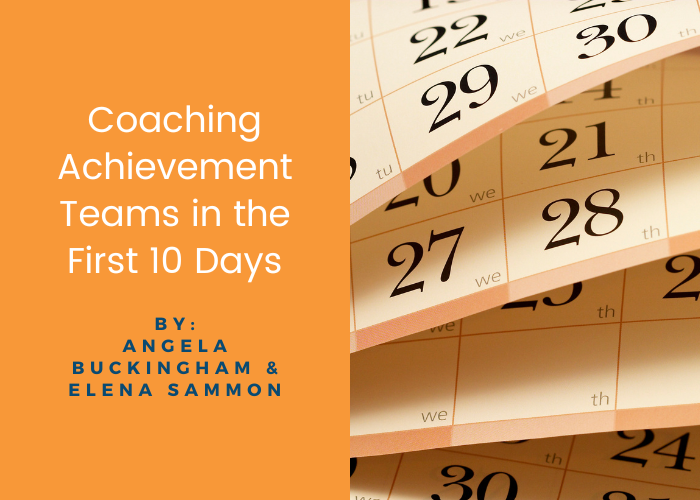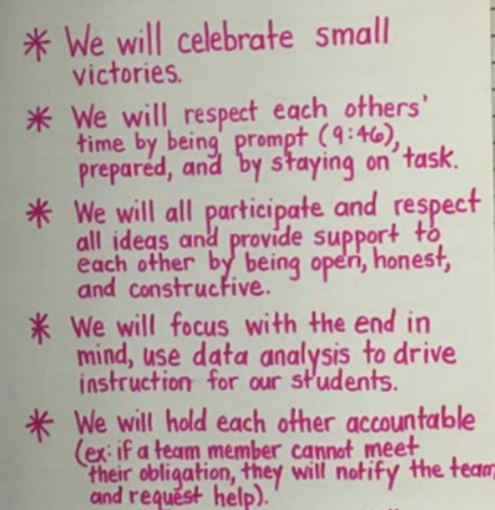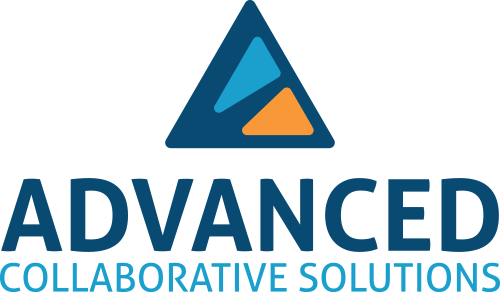Coaching Achievement Teams in the First 10 Days

By: Angela Buckingham and Elena Sammon
“The beginning is the most important part of the work.”
– Plato
As you may already know, Achievement Teams is an experiential and effective four-step protocol centered around Collective Teacher Efficacy — a shared belief that educators can have a greater impact on student achievement when they work together. It is a powerful framework that outlines the structured and systematic work of teacher teams.
However, the work doesn’t happen successfully by chance. It relies on a strong foundation of vulnerability, trust, and interdependence between the members of the team. The role of the coach, then, is to partner with teams to unlock their collective power.
Coaching Achievement Teams in the first 10 days is about laying the groundwork for “how” we will work together before we jump head first into “what” we do together.
We do this by coaching teams to achieve the following five fundamental components of successful teams:
1. Common Language
One of our favorite Friends clips is when Ross, Rachel, and Chandler are attempting to move a couch up a flight of stairs, unsuccessfully. Throughout the scene, Ross repeatedly yells to his friends to “PIVOT!” Frustrated, the team gives up, at which point Chandler asks, “So, what did you mean by pivot?” Beyond a good laugh, this clip illustrates the natural human tendency to assume others have the same vocabulary, definitions, and understanding as we do. Common language is the antidote to preventing these assumptions.
Here is one way coaches can facilitate achieving common language:
- Ask everyone to write their definition of an Achievement Team (or PLC) on a sticky note.
- Using a Round Robin protocol, ask each team member to share their definition, while those listening look for commonalities.
- Support the team in creating a shared definition based on the commonalities heard.
- Record definition. Periodically reflect on whether the team’s work is aligned with the common definition.
2. Collective Commitments
Collective commitments are just that: commitments we make to each other for how we will show up to our meeting space, as our best selves, on any given day. And some days, we may need to try harder than others.
Commitments will likely be broken, so have the discussion now on what the team’s actions will be when they are. While we can’t promise to be perfect, we can promise to be committed and to practice curiosity, empathy, and courage. Collective commitments create a supportive environment where team members feel safe to express their ideas, opinions, and concerns.
One way to coach a team toward creating collective commitments is to:
 Ask team members to individually record ideal behaviors for collaboration on sticky notes (one idea per note). It sometimes helps to ask, “What do you need from others to be successful on this team?” Examples of responses could include: positivity or dependability.
Ask team members to individually record ideal behaviors for collaboration on sticky notes (one idea per note). It sometimes helps to ask, “What do you need from others to be successful on this team?” Examples of responses could include: positivity or dependability.- Collect all sticky notes. Read each sticky note aloud, and group them by common idea.
- When all sticky notes are read and sorted, work together to write a collective commitment for each group of sticky notes. Start each commitment with, “We will...”
- Record collective commitments and reflect on whether the team is achieving them regularly.
3. Roles
In Achievement Teams, individual success is interconnected with team success. A sense of shared responsibility, where team members hold each other accountable for their actions and commitments, creates a high-performance culture and reinforces a collective focus on achieving results.
Without roles, some team members may find it difficult to find entry-points for contributing to conversations. Or they may disengage with the work, questioning whether they belong or add value to the team. Roles send the message that each member is a vital component of the team.
One way coaches can facilitate dialogue around each team member’s strengths and talents as a means to build confidence and self-efficacy is through the use of strengths cards.
- For a new team, ask members to record their strengths and share with the team. This may be difficult for some and may require the coach to use questioning, active listening, and paraphrasing to support team members with reflection.
- For an established team, ask members to record each other’s strengths. Each team member then shares what strengths they recorded for each other aloud.
Once team members know each other’s strengths, they can determine which roles leverage their strengths and how they can best contribute to the team. Feel free to use these Achievement Teams Role Cards, or guide your team in creating their own!
4. Routines
James Clear states in Atomic Habits, “Your outcomes are a lagging measure of your habits…. Good habits make time your ally. Bad habits make time your enemy” (p.18).
Coaching teams toward establishing routines that turn into internalized habits will support teams in using their time effectively to create the space and achieve the results they desire.
Some routines to consider include:
- How will you begin your team meetings to set the intention for the time you are together?
- What processes or protocols will support equity of voice and diverse perspectives?
- How will the team come to a consensus?
- What will the team do when collective commitments are broken?
- How will you celebrate small wins and progress towards goals?
- How will you end team meetings with an optimistic closing?
Some of our favorite routines are:
- Dr. Brené Brown’s Two Word Check-in: Each team member takes turns sharing two words that describe how they’re feeling that day. For example, today I am feeling overwhelmed and hopeful.
- School Reform Initiative protocols
- Elena Aguilar’s Fist to Five Decision Making Strategy
- Ending team meetings by asking:
- What are our action steps?
- What did we learn today?
- How did we work best together today?
- What is on our next agenda?
5. Shared Purpose
While the obvious purpose of any Achievement Team is to improve student outcomes and appropriate new knowledge about teaching and learning, each Achievement Team needs to find a specific shared purpose that will guide their team’s actions and decisions throughout the year.
Coaches can facilitate dialogue that will support team members in sharing their passions and purpose for teaching. Exploring what is important to each of us leads to discovering what is important to all of us.
Teams should also use data to guide them toward determining a long-term goal. Coaches can ask: What is most important for students to learn before the end of the year? This long-term goal will be the north star.
Next, coaches can use Larry Ainsworth’s R.E.A.L. criteria to support teams in setting short-cycle goals that align with their long-term goal.
- Readiness - Will this standard provide students with essential knowledge and skills necessary for success in the next class, course, or grade level?
- Endurance - Will this standard provide students with knowledge and skills useful beyond a single test or unit of study?
- Assessed - Will upcoming state and national exams assess this standard?
- Leverage - Will this standard provide students with the knowledge and skills that will be of value in multiple disciplines?
Next Steps
Coaching Achievement Teams in the first 10 days to establish these fundamental components lays the foundation for teams to harness their collective power and potential.
Once teams have these in place, they can begin the “what” of the work by trying The 10-Day Achievement Teams Challenge next!
Want to learn more about coaching Achievement Teams?
Register today for our Achievement Teams & PLCs Virtual Coaching Network launching this October!

